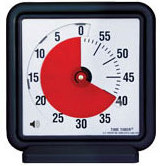There’s an old saying: “It isn’t what you don’t know that hurts you — it’s what you think you know but that’s wrong!”
This
article is a revised version of one that appeared in my newsletter in
November 1999. It consists of a rather unusual quiz that measures
exactly what you mean when you say “I am 90% sure that … ”
It
may also give you some idea of what your doctor, lawyer, accountant or
other professional adviser means when they tell you that they are 90%
sure of something directly effecting your health and wellbeing.
The
quiz questions are exactly the same as the ones I gave in 1999, so if
you took the test then try it again to see how well you do now. You may
find you have improved enormously — there again you may not!
Here’s the instructions. It’s important you read them carefully.
All
the questions are about dates. What’s unusual is that I don’t expect
you to give exact answers. In fact I have deliberately tried to pick
questions to which you are extremely unlikely to know the exact answers.
What
I want you to do for each question is to give a range in which you are
90% certain the answer falls. It’s entirely up to you how big that
range is.
So for example if the question was “What year did
John F. Kennedy enter the US Senate?” you are extremely unlikely to
know the exact answer unless you are a student of political history.
But from such knowledge you have of Kennedy’s life you might decide
that it must have been between 1945 and 1963, so you would put down
1945-1963 as your answer. You’d be right because the correct answer is
1952!
So remember, I want you to answer each question so you are
90 per cent sure that the correct answer falls within your range. I
will say that again: so you are 90 PER CENT SURE the correct answer
falls within your range.
Here goes!
There are ten
questions. All the answers are dates. Where not specified the date is
of the first public launch/presentation. Remember you are being asked
to give a range, not an exact date.
1) Chanel No. 5 perfume.
2) US Supreme Court orders the dissolution of Standard Oil Co.
3) Alexander Fleming invents penicillin.
4) Bruce Springsteen’s “Born In The USA”.
5) Mother Teresa wins the Nobel Peace Prize
6) Mississippi admitted as a state of the Union
7) Isaac Singer’s first sewing machine
8) International Society for Krishna Consciousness (the Hare Krishnas) founded
9) Tchaikovsky’s 1812 Overture
10) Louisa M. Alcott’s “Little Women”
********PAGE DOWN FOR ANSWERS**********
1) 1922 2) 1911 3) 1928 4) 1984 5) 1979
6) 1817 7) 1851 8) 1965 9) 1880 10) 1868
Remember
you were asked to give a range that you were 90 PER CENT SURE the
answer fell into. If you got that spot on, the date should have fallen
within the range you gave for 9 out of the 10 questions. How well did
you do?
Virtually everyone this test is given to gets a much
lower score than 9. I’ve known some people get only one or two right.
If that was your score, then when you say “I’m 90% sure” what you
actually mean is “I’m 20% sure”!
The really worrying thing is
that even when this type of test is given to people in subjects in
which they have expert knowledge, they still tend to greatly
overestimate their knowledge of the right answer.
How often do
you make decisions on the basis of what you think you “know”? Realise
that there is a natural human tendency to overestimate the accuracy of
one’s knowledge. We think our business is doing ok, but when we check
the figures they are very different from what we thought. We think we
know what the trends are, but we get caught by surprise because we
didn’t get the facts to back up our “knowledge”. Don’t get caught out
like this — always make sure that your decisions are made on the basis
of hard facts.
Once you have the facts you can then introduce
other important factors such as your feelings and values, but without
the facts you are building on sand.
(You won’t be surprised to
hear that when I re-tested myself I got 10 out of 10. BUT, even though
I’d researched all the answers myself and moreover knew exactly what to
expect, I still managed to avoid getting two questions wrong by only
one year — and I’d given them a 40 year and a 50 year spread
respectively!)
 Wednesday, October 22, 2008 at 11:40
Wednesday, October 22, 2008 at 11:40 





